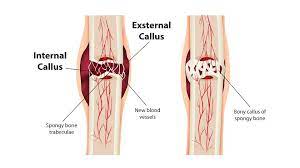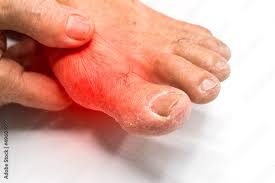
Bone healing is a natural process that occurs when a bone is fractured or broken. The process involves several stages:
- Inflammation: Immediately after a bone is fractured, the body responds with inflammation. Blood vessels at the fracture site dilate and become more permeable, allowing immune cells and growth factors to enter the area.
- Soft callus formation: Over the next few days, cells in the area start to produce a soft callus made of collagen and other proteins. This provides some stability to the fractured bone.
- Hard callus formation: Over the next few weeks, the soft callus is replaced by a hard callus made of bone tissue. This process is called ossification.
- Remodelling: Over several months, the hard callus is reshaped and remodelled to match the original shape of the bone.
The length of time it takes for a bone to heal depends on several factors, including the severity of the fracture, the location of the fracture, and the age and overall health of the individual. In general, it can take several weeks to several months for a bone to fully heal.
There are several things you can do to help promote bone healing, such as:
- Eat a healthy diet that is rich in calcium, vitamin D, and other nutrients that are important for bone health.
- Avoid smoking and excessive alcohol consumption, as these can slow down the healing process.
- Get plenty of rest and avoid putting too much weight or pressure on the affected area.
- Follow your healthcare professional’s instructions for immobilising the affected area, such as wearing a cast or using crutches.
- Attend all follow-up appointments to ensure that the bone is healing properly.
If you are concerned about the healing of a bone, it’s important to speak with a healthcare professional. They can provide advice on how to promote healing and may recommend additional tests or treatments if necessary.

